“Dazzling, puzzling”: must-see artworks at Pierre Bonnard: Designed by India Mahdavi exhibit
Featuring dopamine-inducing paintings and bold backdrops, the NGV’s new exhibition is set to take over social media feeds.
Victoria
Don't miss out on the headlines from Victoria. Followed categories will be added to My News.
The architect and design world’s “queen of colour” has brought much-needed warmth to a dreary Melbourne winter.
India Mahdavi has created bold scenography for the NGV’s new major exhibition, showcasing 100 paintings from 20th-century artist Pierre Bonnard alongside works from his contemporaries.
With Mahdavi’s Instagram-friendly backdrops, the exhibition is set to take over social media feeds – and the Paris-based design icon is now offering rare insights into her creative process in a free tour of the exhibit that has just launched on the NGV website.

In the tour, presented by HSBC, Mahdavi explains to NGV senior curator of international exhibition projects Miranda Wallace how she took inspiration from patterns within Bonnard’s paintings to create a complementary setting that is just as alluring as the paintings themselves.
“Bonnard’s … use of colour and light is incredible and that is what I tried to do in this show,” Mahdavi says.
“Colour for me has become an expression. It’s something I use in a natural way, it’s in my inner self. I always think of the emotional comfort that one can perceive when you enter a space.”
Mahdavi and Dr Wallace have also revealed their 10 favourite works in Pierre Bonnard: Designed by India Mahdavi, which is open until October 8.
See their picks below, and click here to take the virtual tour.
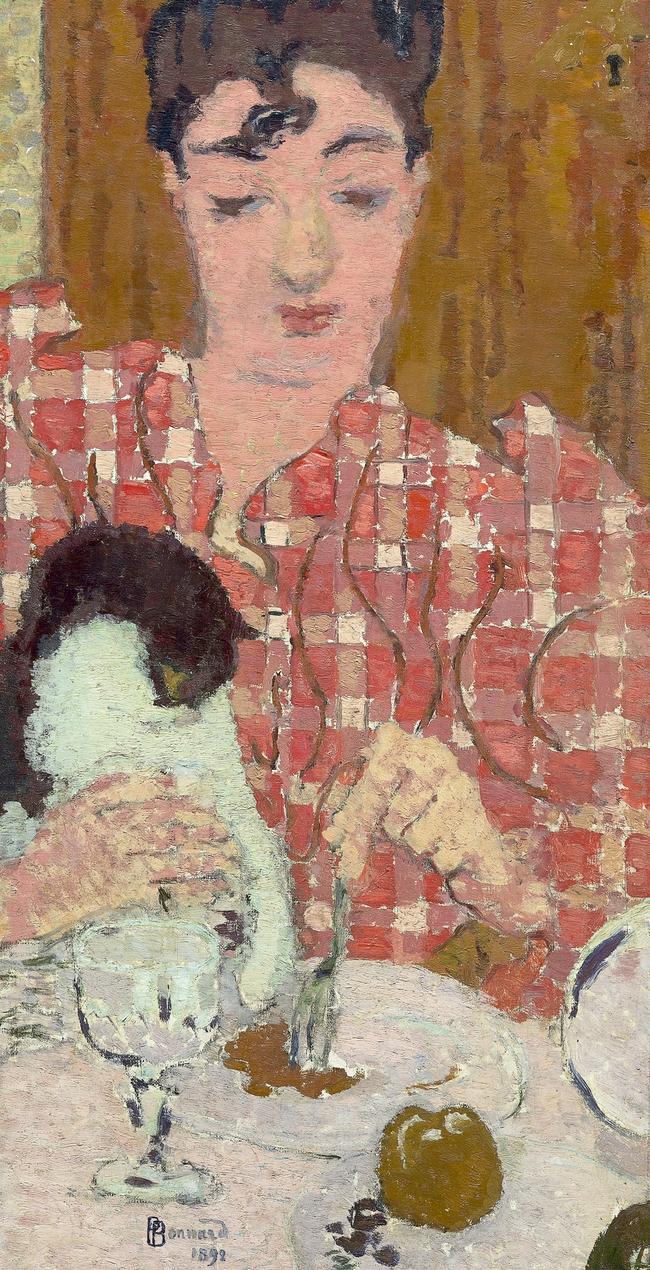
1. The checkered blouse, Pierre Bonnard, 1892
Bonnard’s portrait of his sister, Andrée, was influenced by Japanese art and led to celebrated art critic Albert Aurier describing the painter as a “skilful and ingenious as a Japanese (artist)”. In her virtual tour, Mahdavi says the chequered pattern on Andrée’s blouse inspired part of her scenography for the exhibition: “We sampled the patterns, we enlarged them and we created a set of backdrops like wallpapers that kind of anchor his work.”
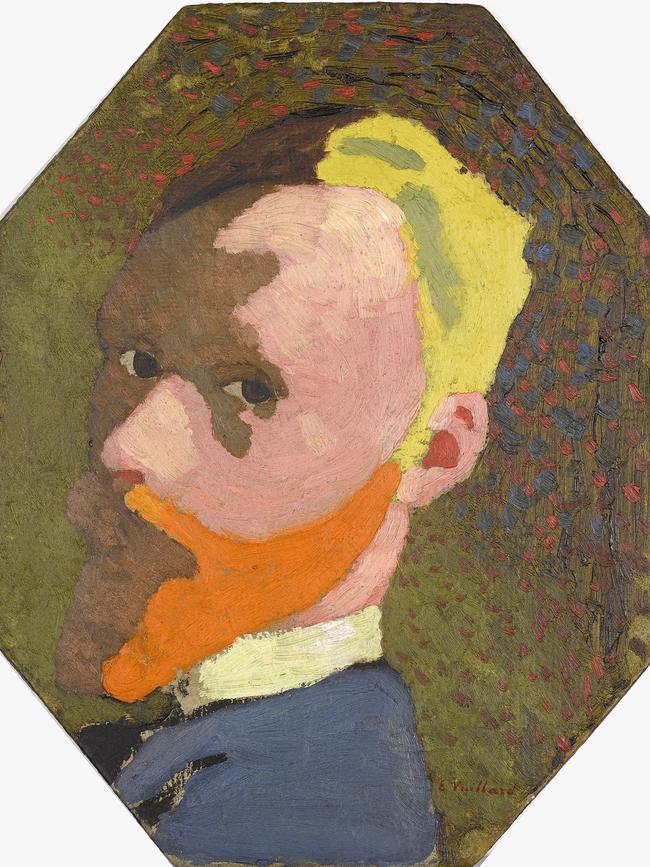
2. Octagonal self-portrait (Autoportrait octagonal), Édouard Vuillard, 1890
Mahdavi labels this piece “one of my favourite paintings” by Bonnard’s friend and contemporary Édouard Vuillard. “I just thought the shape was so unusual,” she says in the virtual tour, noting it informed her design of the striking first room in the NGV exhibition. Dr Wallace says the painting’s octagonal shape “derives from Early Christian baptismal fonts”.

3. Siesta (La Sieste), Pierre Bonnard, 1900
This painting from Bonnard’s “realist period”, during which he “painted frank scenes documenting his relationship with (long-term partner) Marthe de Méligny” is considered a “gem in the NGV’s own collection”, Dr Wallace says.

4. Bourgeois afternoon, or The Terrasse family (L’Après-midi bourgeoise, ou La Famille Terrasse), Pierre Bonnard, 1900
Described by one of Bonnard’s art dealers as the work in which “Bonnard began to look like Bonnard”, this large painting portrays his sister and her extended family at their country estate near Grenoble. “It is partly a scene of middle-class comforts, but Bonnard’s sharp wit and observant eye also picks out certain aspects with a caricatural style, making us view these well-upholstered members of the bourgeoisie with some amusement and detachment,” Dr Wallace says.
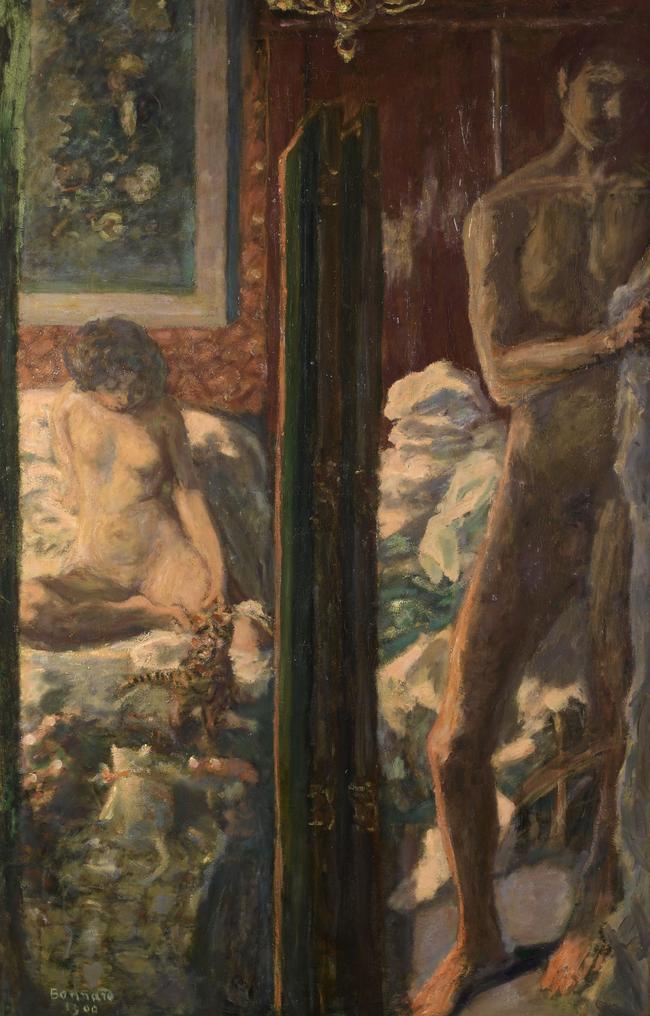
5. Man and woman (L’Homme et la femme), Pierre Bonnard, 1900
While painted in the same year as the previous two pieces, Dr Wallace says this painting has a “very different feel”. “Unique to this scene is the artist’s physical presence: Bonnard stands naked and in shadow, facing the viewer, while his partner, Marthe, casually reclines on the nearby bed playing with two cats,” she says. Dr Wallace notes Man and Woman “possesses a note of the existential angst that links it to a Scandinavian cultural influence in Paris of the 1890s”.
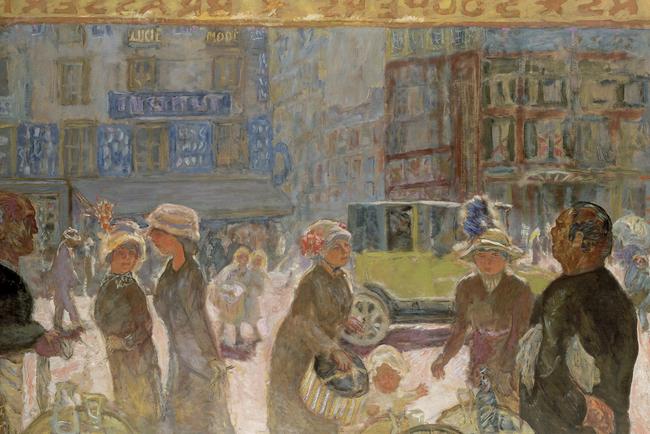
6. La Place Clichy, Pierre Bonnard, 1912
Bonnard painted Place Clichy, a busy intersection near Montmartre, many times in his career. This lively scene, created when Bonnard was in his early 40s, captures “the modernisation of Paris” and reveals Bonnard’s “love of reflections and visual tricks”, Dr Wallace says. “We see a morning crowd outside a cafe and, in the middle distance, a shiny green automobile,” she says. “Bonnard loved cars, and had acquired one of his own just the year before.”
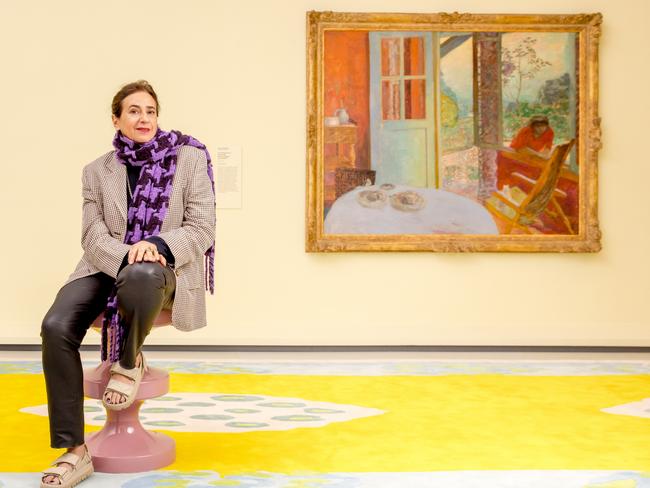
7. The dining room in the country, Pierre Bonnard, 1913
Dr Wallace describes this as one of the most beautiful examples of Bonnard’s unique genre of “domestic landscapes” – that is, “paintings that merge interior spaces and natural surroundings, using the device of an open door or window”. In it, a dining table is casually set with three dishes, two small cats perch on chairs and a crouching figure, likely Marthe, can be seen through a window. “The verdant, almost ethereal landscape beyond, in shades of lilac, pink, yellow and green, suggests the ongoing influence of Claude Monet,” Dr Wallace says.
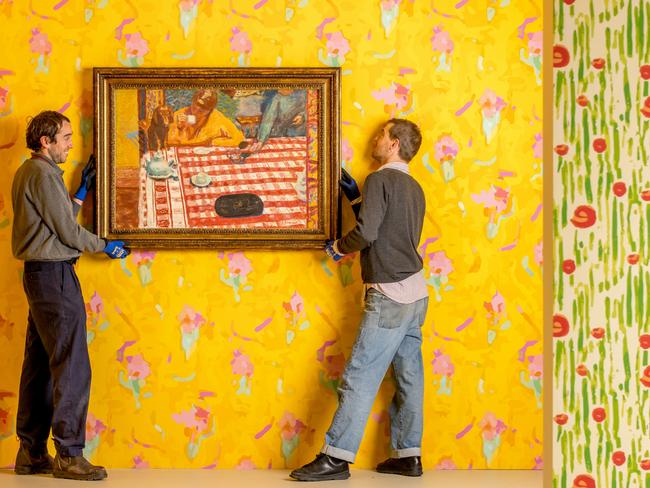
8. Coffee, Pierre Bonnard, 1915
Another famed Bonnard domestic scene, Coffee again features Marthe, domestic items like a teapot and coffee cup, and a pet – this time, one of the couple’s dachshunds. Marthe and the dog are “seemingly unaware of Bonnard’s presence”, Dr Wallace says, adding: “To the right of the painting, a portion of a wall is cut off. This peculiar use of perspective gives the impression that you, the viewer, are a part of the scene depicted.”
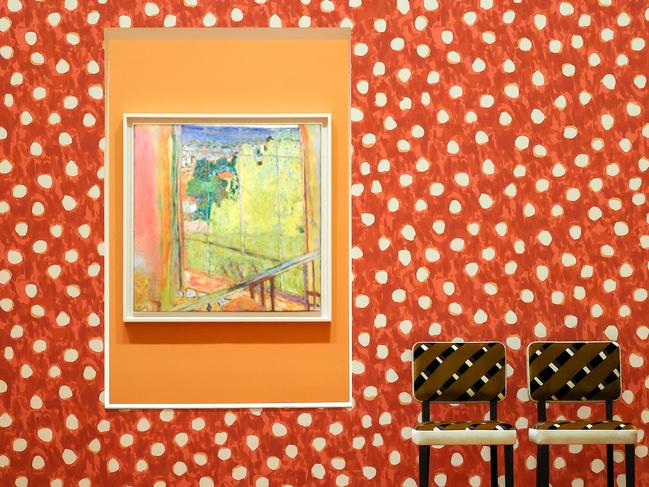
9. The studio with mimosa, Pierre Bonnard, 1939–46
Inspiring a burst of dopamine, Studio with mimosa showcases “Bonnard’s Le Cannet studio and the natural splendour beyond its walls, including flowering mimosa (acacia) trees and the distant bay of Cannes”, Dr Wallace says. Art historian Ursula Perucchi-Petri notes this piece exemplifies an important shift in the artist’s style “toward the transfiguration of reality in an ever richer and more luminous tapestry of colour”. Mahdavi identifies it as “one of my favourite paintings” for its use of bright yellows and pinks, and the way it “evokes so much the south of France”.

10. Corner of a table, Pierre Bonnard, 1935
Described by Dr Wallace as “at once dazzling and puzzling”, this still life portrays a dining table in Bonnard’s Le Cannet studio adorned with fruit-filled dishes and a wicker basket alongside a wooden chair “far too small for logical perspective”. French art historian André Fermigier notes this motif is “one of Bonnard’s most curious inventions” as it is “hard to understand in what position the painter could have got himself in order to see it just so”.



